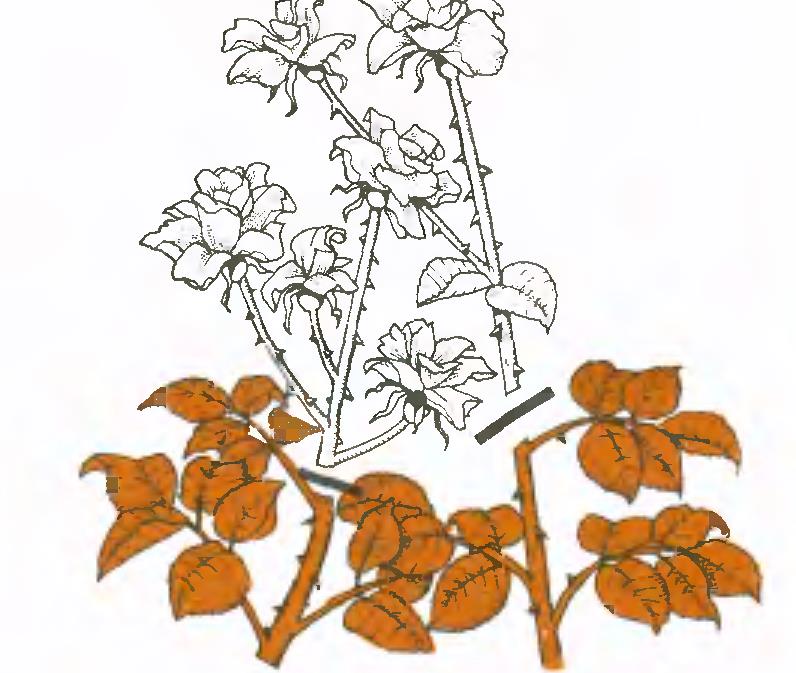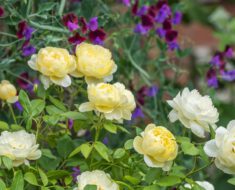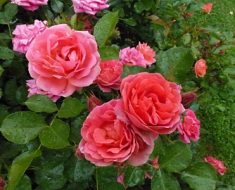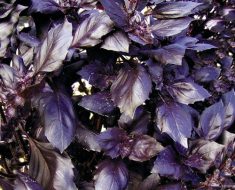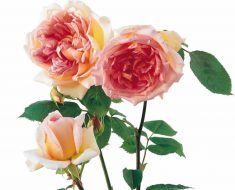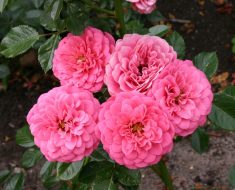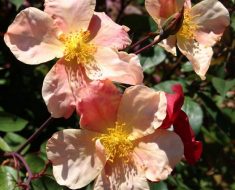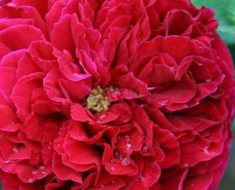Rose WILLIAM SHAKESPEARE 2000 blooms profusely with dense double flowers, painted in a velvet raspberry color, eventually acquiring lilac shades. Their fragrance resembles the smells of ancient roses. Branches vertically directed. The English rose WILLIAM SHAKESPEARE 2000 is named after W. Shakespeare.
WILLIAM SHAKESPEARE 2000
CHARACTERISTICS. ROSE WILLIAM SHAKESPEARE 2000
- Group – English roses
- Subgroup – English hybrids of Old roses
- Main form – shrub
- Height – 1.2 m
- Diameter – 0.9 m
- Bush form – oval
- Flower color – dark velvet crimson color
- Number of petals – 120 (densely terry)
- Flower shape – quartered bowl
- Flower size – 10 cm
- Flowering shape – clusters
- Flowering type – repeating
- Aroma – rich, warm
- Foliage – large, dark green with a red rim, shiny, plentiful
- Shoots – upright, with spikes, plentiful
- Features – prefers penumbra areas; Needs additional care; cold-resistant
- Resistance to powdery mildew – below average
- Resistance to black spotting – below average
- Cold resistance – 5 – 9 USDA zones
- Breeder – D. Austin
- Catalog name – Ausromeo
- Year of introduction to the culture – 2000
- Soil – all types of
- pH – there may be slight variations from neutral ( 5.6 – 7.8)
- Drainage – required
- Plot – partial shade / sunny
- Container – yes
- Standard – yes
- Planting types – mixed planting, borders, hedges, container garden, rose gardens
- Pests – typical for roses
- Diseases – powdery mildew, black spotting, rust of roses hit the rose with poor care, prolonged cold damp weather
WILLIAM SHAKESPEARE 2000
Caring for a rose WILLIAM SHAKESPEARE 2000 as follows:
- Planting for roses is the most important step in caring for them. Rose WILLIAM SHAKESPEARE 2000 prefers partial shade areas with well-arranged drainage. It grows on almost all types of soils. The earth must be loose in order to allow enough water and air to pass through to the root system.
- Watering. Roses are watered as necessary – from 10 liters of water per 1 adult bush on average 2 to 3 times a week. In dry times, watering is more frequent. If the English rose WILLIAM SHAKESPEARE 2000 grows in a container, then watering is usually more frequent. In both cases, it all depends on weather conditions.
- Fertilizing with fertilizers is a must! spend every 3 weeks to keep the rose healthy and not affected by disease. It can be both mineral fertilizers and organic. Vitamins are also given to roses, which are administered by spraying. For roses growing in pots, top dressing is more frequent, but smaller doses are used.
- Pruning roses depends on the group to which it belongs. Pruning is done twice: in the summer, faded parts are constantly trimmed to stimulate the appearance of new flowers, and in the fall, winter or early spring, pruning is performed to form the plant and prevent it from diseases or pests hiding under the bark of the plant. The potted rose of WILLIAM SHAKESPEARE 2000 is also pruned.
- Loosening and weeding the soil around the rose bush is necessary for the circulation of air, moisture and nutrients for the root system. To minimize your labor, use mulching. This agricultural technique will help reduce weeds and leave the soil longer moist. This applies to container roses.
- Shelter for the winter is especially necessary if the minus temperatures are very low or in winter, frequent long thaws are characterized by a sharp decrease in minuses. Be sure to cover the English rose WILLIAM SHAKESPEARE 2000, growing in pots.
WILLIAM SHAKESPEARE 2000
Enjoy your cultivation!
